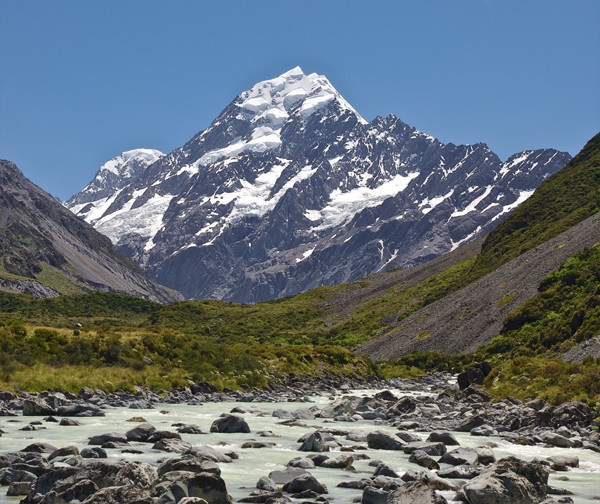
by Timothy Oleson Tuesday, November 4, 2014

Researchers found that rainwater penetrates into the brittle-ductile transition zone beneath New Zealand's Southern Alps. Credit: ©Jörg Hempel, CC-BY-SA-3.0-de.
Rainwater is capable of percolating deeper into Earth’s crust than once thought possible, according to a new study. The finding could impact our understanding of mountain building, the behavior of rock deep underground and the formation of hydrothermal mineral deposits.
That surface waters can penetrate much of the brittle upper crust, the lower limit of which varies from roughly 5 to 15 kilometers deep depending on rock properties, has long been recognized, particularly near mountain ranges where collisions between tectonic plates uplift rock and create deep networks of fractures. But whether this water could reach all the way into the brittle-ductile transition zone, where high pressures and temperatures above about 300 degrees Celsius cause rock to slowly flow rather than crack, has been unclear.
To study how deep surface waters could penetrate, Catriona Menzies of the University of Southampton in England and colleagues sampled portions of hydrothermal quartz veins and fluid inclusions that had formed beneath New Zealand’s Southern Alps. The Alps are actively being uplifted due to the collision of the Pacific Plate with the Australian Plate, exposing veins formed more than 6 kilometers beneath the surface, which is about the depth that the brittle-ductile transition zone is thought to begin in this region.
The team reported in Earth and Planetary Science Letters that isotopic signatures of deuterium and oxygen in the samples indicated that surface water had been the dominant contributor to these fluids — possibly mixing with small amounts of fluids from deeper within Earth — even at depths as far down as 8 kilometers.
© 2008-2021. All rights reserved. Any copying, redistribution or retransmission of any of the contents of this service without the expressed written permission of the American Geosciences Institute is expressly prohibited. Click here for all copyright requests.